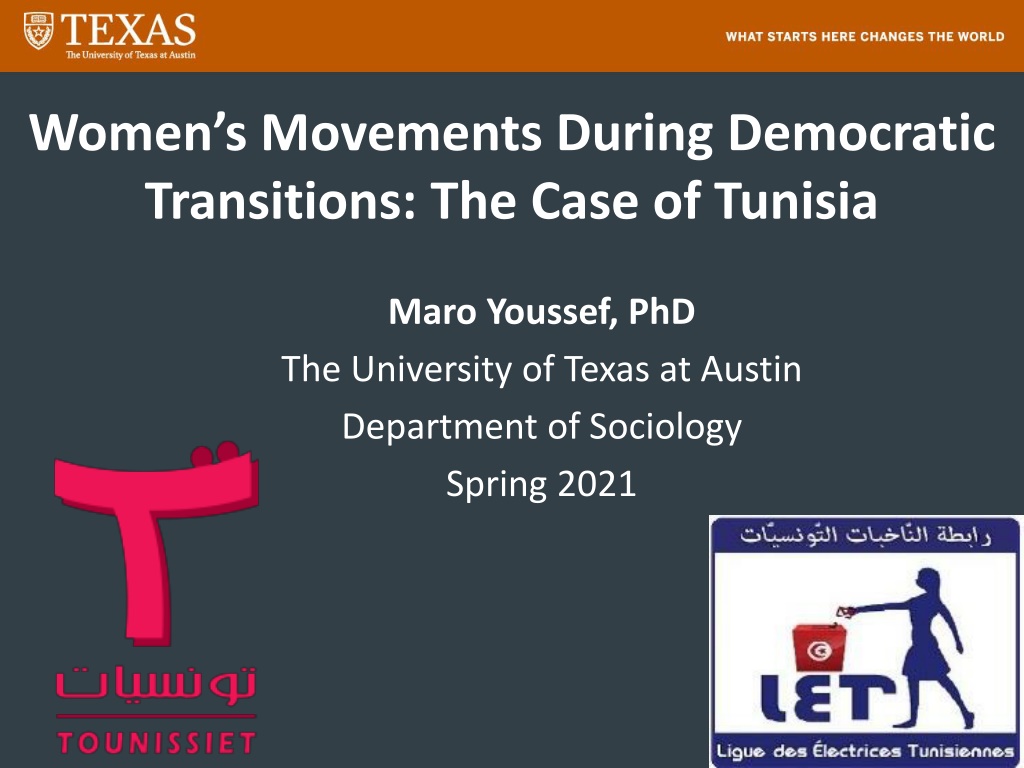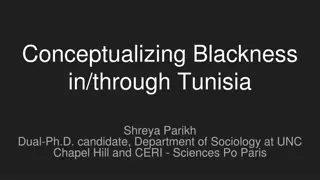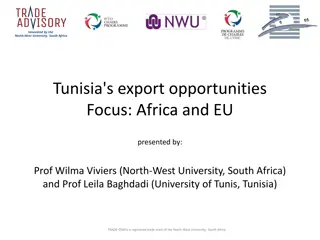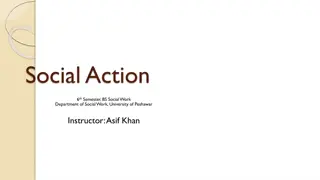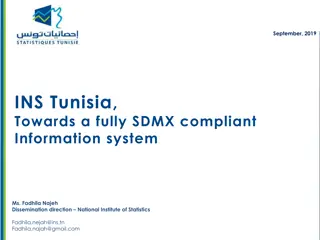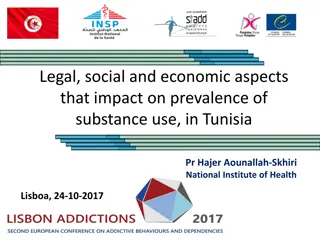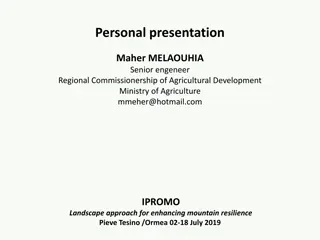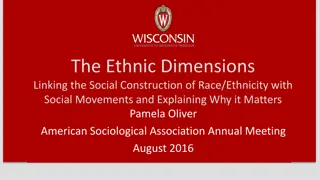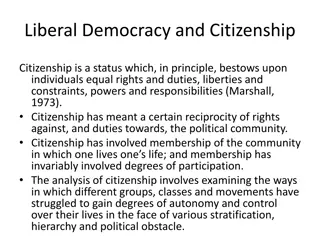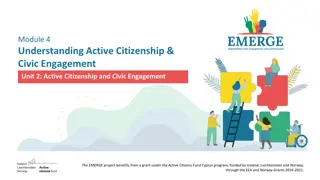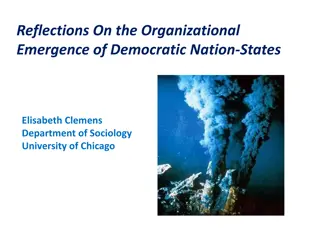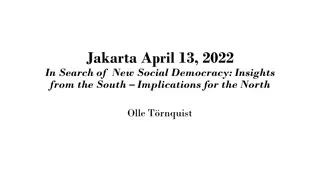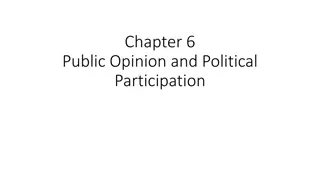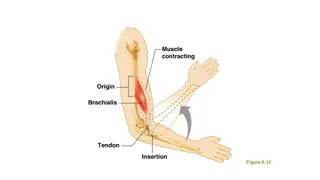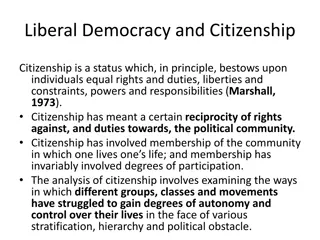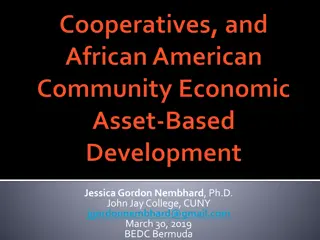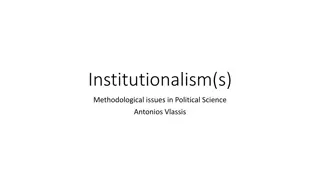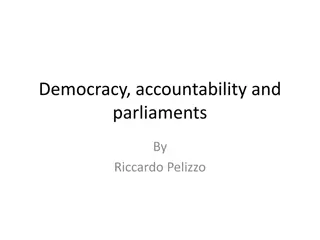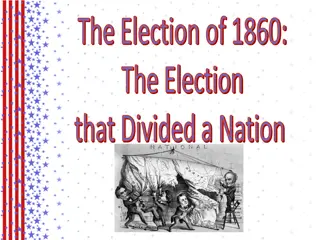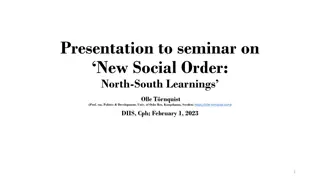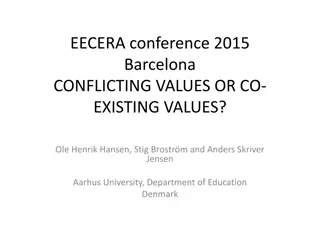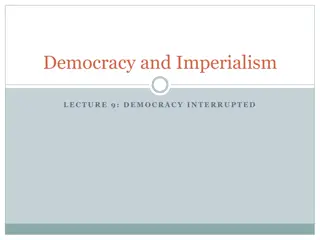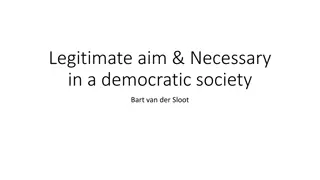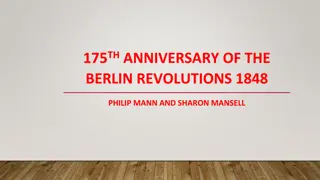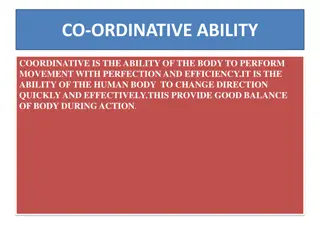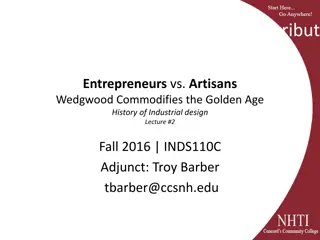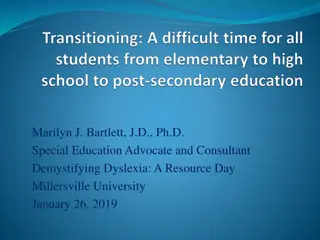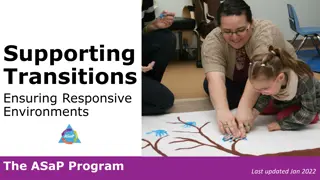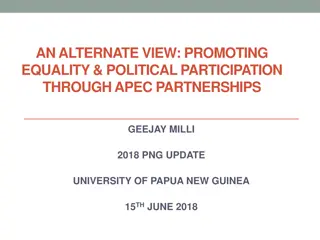Women's Movements in Tunisia: Political Participation During Democratic Transitions
Analysis of women's political participation in Tunisia during democratic transitions, focusing on the interaction between Islamist and secularist women's rights organizations. The study examines factors influencing the sustained activism of these organizations post-revolution and provides insights into gaps in existing scholarship.
Download Presentation

Please find below an Image/Link to download the presentation.
The content on the website is provided AS IS for your information and personal use only. It may not be sold, licensed, or shared on other websites without obtaining consent from the author. Download presentation by click this link. If you encounter any issues during the download, it is possible that the publisher has removed the file from their server.
E N D
Presentation Transcript
Womens Movements During Democratic Transitions: The Case of Tunisia Maro Youssef, PhD The University of Texas at Austin Department of Sociology Spring 2021
Key Concepts Secularists/Liberals: Actors who wish to separate religion from politics. They draw on liberal democratic values and universal human rights. Islamists/Conservatives: Actors who wish to incorporate elements of religion into politics. They draw on religion and democratic values that align with religious beliefs (Islam in Tunisia). Political Insider: Actors who form relationships with key political actors and provide feedback on drafts of legislation.
Theories on Womens Political Participation During Democratization Women politically participate in revolutions and during early years of democratic transitions, but participation recedes after (Ferree 2012; Sadiqi 2016; Tadros 2020). Women s continuous political participation is ONLY in post-civil war contexts (Badri &Tripp 2017; Basu 2016; Viterna & Fallon 2008). Conservative/Islamist women often join counter-movements to curtail women s rights during democratization (Jad 2010, 2011 & 2018; Rinaldo 2008, 2013 & 2019; Somer 2017).
Gaps in the Scholarship There is no explanation for women s political participation throughout democratic transitions in non-civil war contexts. Islamist-secularist women s cooperation is under-studied in gender politics and area studies. Yet, in the case of Tunisia, where I studied women s political participation, I found that two women s rights organizations (one Islamist and one secularist) became political insiders and remained active throughoutthe democratic transition.
The Puzzle: Womens Activism in Tunisia Women participated in the 2010-2011 revolution. They created 300 new organizations after the revolution. This included Islamists for the first time. Most women s rights organizations actively sought, and received, aid from foreign donors. Twelvewomen s advocacy organizations remained active throughoutthe democratic transition.
Research Question Under what conditions do women s rightsorganizations, founded immediately after a revolution, remain politically active throughout democratic transitions?
Methodology Ethnographic Methods 69 In-person Interviews: Women s rights organizations, foreign donors, state officials, and Tunisia country experts. Over 7 months in Tunisia and Washington D.C. (2018-2019). Participant observations of organizational meetings, parliamentary sessions, and donor events.
The Case: LET and Tounissiet Both Created in 2011 Remain active today Provided feedback on all gender-related draft legislation Used foreign aid to professionalize Formed a feminist coalition Islamist Tounissiet focused on: Electoral gender quotas Transitional justice Gender-based violence Secularist la Ligue des lectrices Tunisiennes (LET) focused on: Electoral gender quotas Gender-based violence
Argument I argue Tounissiet and la Ligue des lectrices Tunisiennes (LET) became political insiders and remained active throughoutthe democratic transition in Tunisia by: Professionalizing their organizations Forming an unlikely feminist coalition
Findings: Islamist Womens Activism Tounissiet advocated for reforms aligned with the democratic transition. However, they fought against reforms that challenged religion. Transitional justice for past abuses under dictatorship Eliminating violence against women Implementing comprehensive electoral gender quotas. They resisted reform to inheritance law, based on Islamic law Scholarly contribution: Conservative women s rights organizations do participate in democratic transitions. Not all of them join counter-movements. Tounissiet advocated for increasing women s political rights, as long as those rights did not threaten religion.
Findings: Professionalization LET and Tounissiet used foreign donor aid to: Create headquarters in the capital & various branches in the interior Engage different political actors through oral and written briefs Draft annual reports for donors and the public Learn to engage media As professionalized organizations, LET & Tounissiet became political insiders and: Made their ideas on political violence mainstream (which became part of the 2017 gender-based violence law) Provided input on every draft piece of gender legislation since 2011 Some of their founders entered politics and became part of the state Contribution to gender politics:Tunisia shows women s organizations can become political insiders and remain active throughout the democratic transition.
Findings: An Unlikely Feminist Coalition In 2018, LET and Tounissiet formed a short-term unlikely feminist coalition around similar threats, common tasks, a collective feminist identity, and shared gendered-grievances. Lobbied for comprehensive electoral gender quotas (achieved) Advocated for full implementation of 2017 gender-based violence law (remains ongoing concern) Their cooperation showed some women s issues were bipartisan, despite ideological differences Contribution to gender politics & social movement coalition literature: Women's rights organizations form conservative-liberal coalitions I call this type of cooperation an "unlikely feminist coalition"
Negative Case: Nissa Tounissiet Established by Islamist women in 2011 Did receive foreign donor seed money (2011-2014) Did become political insiders early on through specialization in transitional justice Did not professionalize Did not form a coalition with any secularist organization Disappeared after 2014
Recap: Key Takeaways LET and Tounissiet became political insiders and remained active throughout the democratic transition. They used foreign donor aid to professionalize. They formed an unlikelyfeminist coalition around similar threats, common tasks, a collective feminist identity, and shared gendered- grievances.
Policy Recommendations Foreign Donors: support local women s rights organizations throughout democratic transitions Ask local women s rights organizations about their needs. Offer financial and technical assistance. Support organizations across the ideological and political spectrum. Engage local political actors on women s issues. Local Women s Rights Organizations: Identify a need and specialize in a few key issues. Apply for and use foreign donor funds to professionalize. Find common ground with others and form alliances to get bipartisan and broad support on gender issues.
